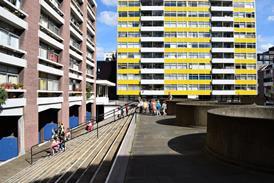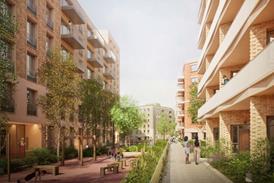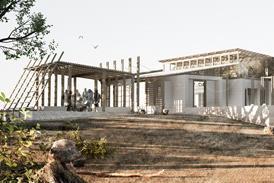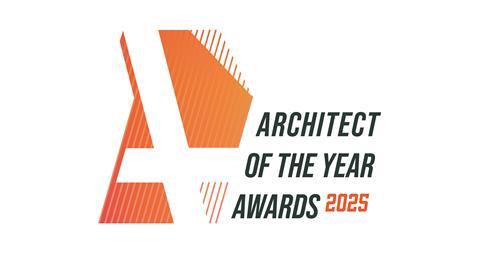With the UK’s built environment under immense pressure – from housing targets and safety concerns to sustainability and skills shortages – the sector faces a critical identity crisis. Without a clear shared purpose or leadership, how can it rise to meet today’s challenges?
The built environment is being pulled in many different directions.
Earlier this year the government proposed a new Planning and Infrastructure Bill, as part of its ambition to build 1.5 million new homes over the next several years.
The goal of this bill was to streamline the country’s complex planning system. However, concerns remain around the ability to deliver this infrastructure sustainably when our sector is responsible for 39% of annual emissions.
There’s also the issue of safety. While demand for housing soars, the United Kingdom finds itself in the midst of a cladding crisis, with thousands of people occupying potentially unsafe homes across the country and the aftermath of the Grenfell Tower fire still causing upheaval throughout the sector.
Couple these factors with a shortage of skilled professionals – 41% of the construction workforce are expected to have retired by 2031 – and you have a sector under enormous pressure that will only escalate in the years to come.
The lack of purpose in the built environment
At the core of these issues is the fragmented nature of the built environment.
There have long been operating silos that divide professions like real estate, construction, planning and architecture, despite the fact their work and respective areas of expertise overlap considerably.
This plays out in various ways and exasperates the challenges we face, leading to poor communication, a lack of collaboration and critical oversights in sustainability, efficiency and even safety.

The Grenfell Tower fire is a key example of this. Last year, Dame Judith Hackitt, author of an independent review for the UK government into UK building regulations and fire safety after the disaster, spoke on the BE Sustainable podcast of her observations:
“People see their bit – they don’t see it as part of a whole and they don’t connect to an overall purpose. You will often hear people say: ‘I just do my bit’ or ‘that’s somebody else’s job to look after that’.”
As Judith responded when she was asked if she felt the built environment understood its overall purpose: “My experience from conducting my review would say emphatically no.”

Ashley Wheaton, Vice Chancellor of the University College of Estate Management (UCEM), also commented on another episode of the podcast on this lack of unified purpose:
“It’s one of the greatest challenges the built environment faces. It knows what it does and how it does it, but it doesn’t focus so much on the end outputs, whether it’s sustainability or any other function.”
“Imagine a world where if you spoke to a construction worker on site building a new school and you asked them what they were doing. And instead of the answer being ‘Well, I’m laying courses of bricks’, the answer was, ‘I’m enhancing the life chances of the children that will be schooled in this building…’ Imagine the dynamic change that we’d have in the industry.”
Our sector’s leadership vacuum

Marc Fleming, Programme Leader for UCEM’s BSc (Hons) Architectural Design Technology, spoke on the podcast of what he sees as the core focus that could unify the sector:
“The overarching responsibility of the sector is to provide safe, equitable houses and place to live.”
“We need to think beyond monetary value in terms of deeming a construction project a success, and realise what we are invested in building are safe and future communities.”
“We need to educate clients in terms of their responsibilities and the opportunity that they have got to drive behavioral change across our industry.”
Delivering on this purpose will not be easy. Along with a shortage of talent joining the sector, there are a plethora of skills we’re short of, from digital expertise and technical proficiency to sustainability literacy and effective communication. Yet among these, leadership is the most crucial, as Marc notes:
“What the sector needs is people with new ideas, new leadership skills so that they can embrace the challenges that the sector faces.”
Dame Judith Hackitt agreed, pointing to the lack of ownership and responsibility across the building lifecycle.
“Because there’s no one responsible overall and the architect gets deliberately excluded from reviewing the final product, there’s no chain of thought or responsibility in the way buildings are designed and constructed to ensure that what was intended is what gets delivered.”
The pivotal role of architectural technology in delivering the built environment’s purpose
There’s a strong argument that architectural technology has the opportunity to fill our sector’s leadership vacuum. Indeed, the role of the Principal Designer – established by the Building Safety Act to plan, manage and coordinate health and safety throughout construction projects – is arguably one naturally suited to the expertise of professionals in architecture and design.
As Marc Fleming notes:
“Now that the principal designer competency framework is established from PAS 8671, it’s evident that chartered architectural technologists can play a significant role in supporting the objectives of it.”
“The Chartered Institute of Architectural Technologists’ (CIAT) Principal Designer register gives the architectural design technology professionals an opportunity to lead the way with other allied professions in ensuring optimised building safety.”
“From managing the golden thread to technical, legislative and design compliance, chartered architectural technologists have the expertise and versatility to deliver to the standards.”
“This makes it an exciting time for the profession to be part of an industry that is transforming approaches to building safety.”
For architectural technologists to make this step, fill the leadership vacuum and deliver greater accountability, they need the skills, knowledge and creativity to bridge the gap between professions and champion the importance of safety throughout the building lifecycle.
UCEM’s BSc (Hons) Architectural Design Technology was launched to help meet the demand from the industry for the creative and digital skills that will help realise a safe and sustainable built environment.
This programme emphasises collaboration and communication, giving students the skills to integrate their creativity with both technical expertise and sustainability knowledge.
As with all of our undergraduate programmes, it explores and emphasises the role of architectural design technology in the overall building lifecycle, with specific reference to the RIBA Plan of Work. It also includes a module specifically devoted to sustainability.
To find out more, visit the programme page: BSc (Hons) Architectural Design Technology.
UCEM are the only university to offer this degree as a fully online provision, and have also introduced a two-year Level 4 Construction Design and Build Technician apprenticeship to support growing demand from employers.















